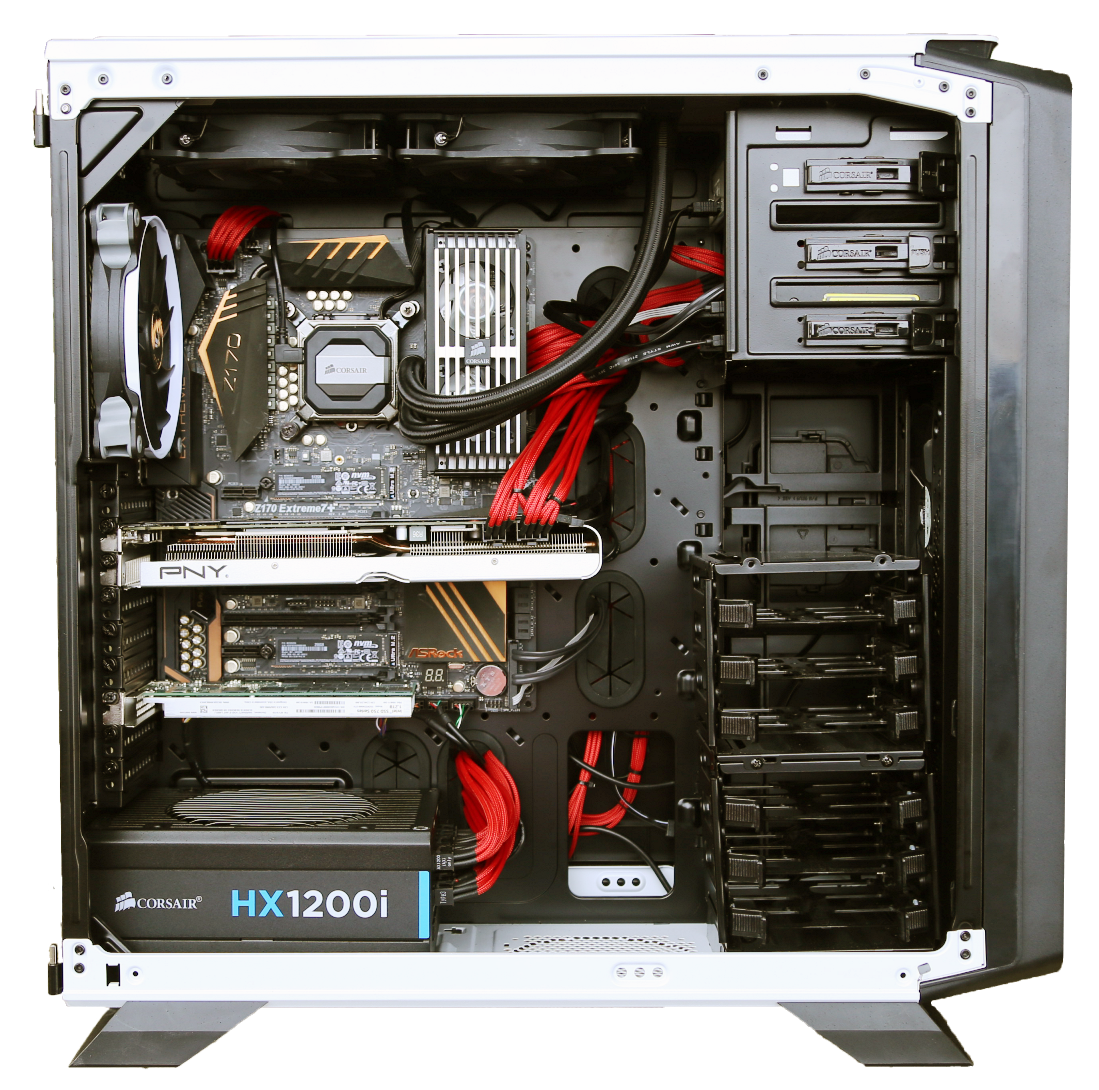At The SSD Review, we test our SSDs slightly different depending upon the drive’s marketed purpose, be it consumer/oem or enterprise focused SSD. For a consumer external SSD, our goal is to test in a system that has been optimized with our SSD Optimization Guide, however, CPU C States may or may not have been altered, dependent on motherboard UEFI features. Benchmarks for our consumer tests are that of fresh drives (PCMark 8 testing exempt), so that we can verify that the manufacturer’s specifications match the SSD. Additionally, we also include links to the benchmarks used in our reports so that you as the reader can replicate our tests to confirm that your SSD is top-notch.
TSSDR Z170 TEST BENCH COMPONENTS
Our Z170 Test bench was the result of some great sponsorship’s and our appreciation goes to Samsung, Corsair, ASRock, PNY and Intel for helping us with this build. All of the hardware we use for testing is available for purchases at a reasonable price; albeit this specific build is a tad high-end. The links provided below can assist in pricing and availability of the hardware contained within this system:
| PC CHASSIS: | Corsair 760T White Full Window |
| MOTHERBOARD: | ASRock Z170 Extreme7+ ATX DDR4 |
| CPU: | Intel I7-6700K 4.00 GHz |
| CPU COOLER: | Corsair Hydro Series H110i GTX |
| POWER SUPPLY: | Corsair HX1200i ATX12V |
| GRAPHICS: | PNY GTX 980 4GB XLR8 Pro OC |
| MEMORY: | Corsair Dominator Pl 32GB 2800 |
| STORAGE: | Intel 750 Series 1.2TB NVMe SSD |
| KEYBOARD: | Corsair Vengeance K70 Mech |
| MOUSE: | Corsair White M65 Laser |
| OS | Microsoft Windows 10 Home 64 Bit |
BENCHMARK SOFTWARE
The software used for today’s analysis is typical of many of our reports and consists of ATTO Disk BenchMark, Crystal DiskMark, Anvile Storage Utility, and AS SSD. This software is FREE and access to all programs can be done by simply clicking on the title of the benchmark. For a complete background and linkage to the software we use, check out our recent article, “The Ultimate Guide To SSD Benchmark Software“.
ATTO Disk Benchmark is perhaps one of the oldest benchmarks going and is definitely the main staple for manufacturer performance specifications. ATTO uses RAW or compressible data and, for our benchmarks, we use a set length of 256mb and test both the read and write performance of various transfer sizes ranging from 0.5 to 8192kb. Manufacturers prefer this method of testing as it deals with raw (compressible) data rather than random (includes incompressible data) which, although more realistic, results in lower performance results.
Performance maximums for our ATTO testing were 427MB/s, having tested this SSD in four different PC systems. Listed specs for the SE730 are ‘up to’ 500MB/s, this transfer speed still being healthy for a portable SSD of this size.
 The SSD Review The Worlds Dedicated SSD Education and Review Resource |
The SSD Review The Worlds Dedicated SSD Education and Review Resource | 


I wonder about the possibility of using this with a USB C equipped smartphone as USB-OTG… Would it run off a phone? It really is a strangely small capacity for a full fledged external SSD
If I had the cable, I would try it…
Most of the smartphones have usb 2.0 type-c port.
They have the port but do not have a type-c to type-c cable. It always falls back to regular USB
You can buy standart usb-c to usb-c cable, main problem usb 2.0 (read/write speed 40Mb/s).
My Huawei P9 can do 3.0 with OTG, but not when connected to a computer. With a good OTG cable and a Kingston MobileLite G4 card reader it can read sd cards with speeds over 80MB/s. But I don’t have faster devices, so I don’t know the limit of the phone.